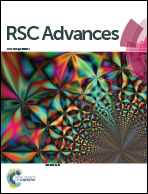Understanding the origin of ferromagnetism in Er-doped ZnO system
Abstract
The present study reports the structural, optical and magnetic properties of ZnO with doping of Er ions in low concentrations (0 ≤ x ≤ 0.05). X-ray diffraction (XRD) pattern shows that most Er ions are incorporated in the ZnO matrix when x ≤ 0.03, whereas few of them are present at interstitial sites. At higher concentrations, substitutional sites are occupied; therefore, Er ions form clusters at the interstitial sites of ZnO lattice or segregate on the surface, leading to lattice deformation. The lattice parameters and crystallite size initially decrease on doping with Er up to 3%, and increases for the highest dopant concentration (i.e., 5%). The surface morphology (particle size and porosity) changes with the introduction of Er ions into the host lattice. Magnetization follows the same trend as that of the structural parameters. The saturation magnetization first increases up to 3% of Er and then decreases thereafter. Such variations are understood on the basis of HRTEM, thermogravimetric (TGA), photoluminescence (PL) measurements and are then correlated with the results of X-ray photoelectron spectroscopy (XPS). PL results imply that the defect band edge is increased significantly for doping levels of 3% and a reduction is seen for 5%. TGA measurements reveal that there is a reduction in weight loss % with Er content from 0% to 3%, whereas a slight increase is noticed for Er 5%. XPS measurements show that Zn 2p edge is not altered after doping with Er, whereas there is a change in the peak intensity of oxygen 1s edge. Based on the results of PL, TGA and XPS, it is inferred that defects related to oxygen vacancies are mainly responsible for the magnetism in the present system.


 Please wait while we load your content...
Please wait while we load your content...